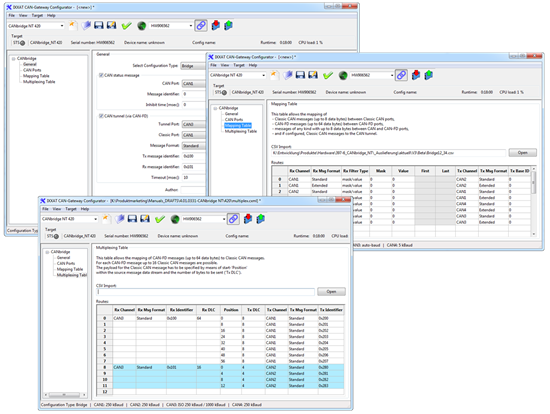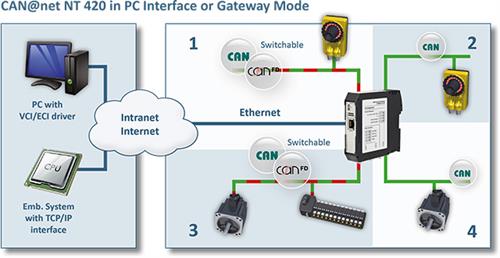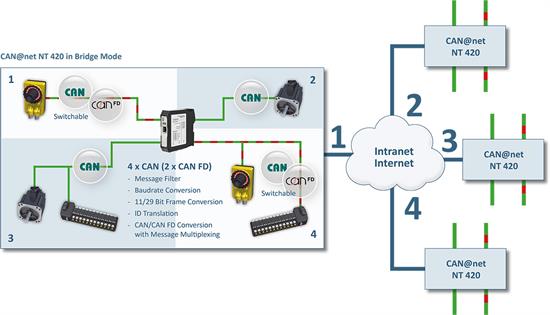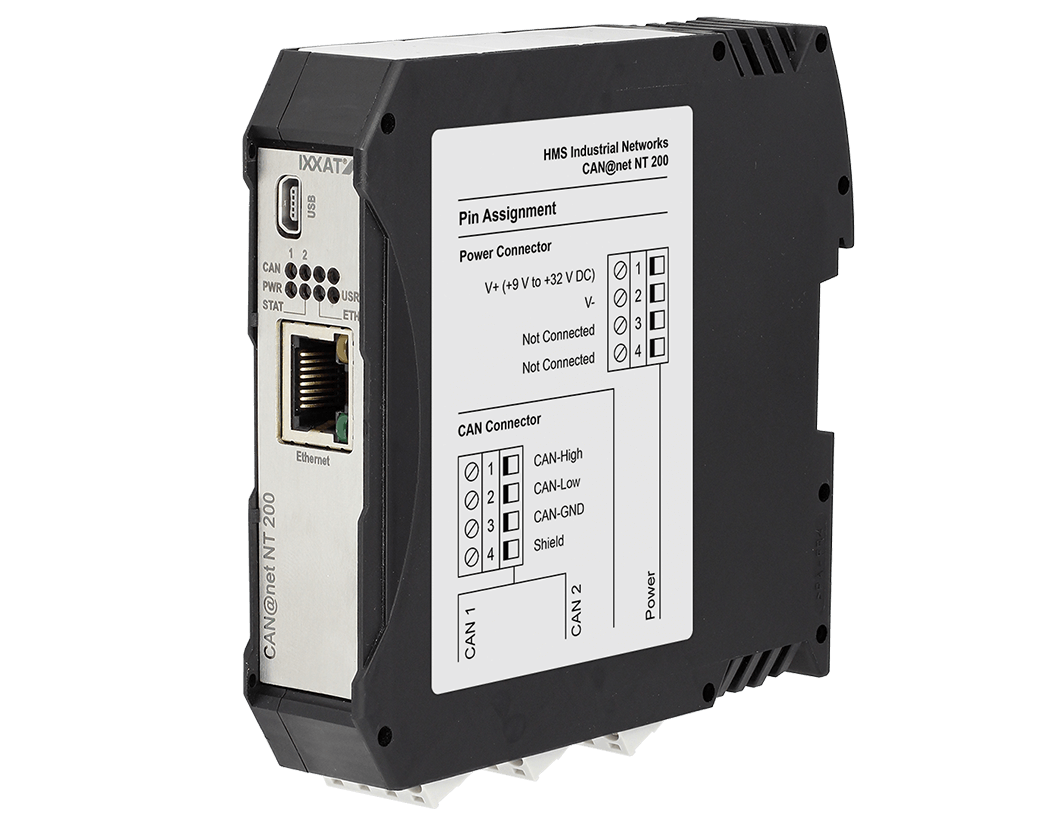CAN@net NT 200/420
Características destacadas
- Easy coupling of CAN and CAN-FD systems and devices
- Bridging of large distances and easy remote system access using Ethernet
- Cost savings due to simple wiring
- Up to four independent CAN channels (2 CAN FD channels)
- Powerful filter, ID translation, data mapping and multiplexing functionality
- Windows configuration tool for easy configuration via USB or Ethernet
- Designed for high performance in harsh environments
Descripción
The CAN@net NT is offered in two variants, as CAN@net NT 200 with two classic CAN channels and as CAN@net NT 420 with four CAN channels, of which two channels can be switched between CAN and CAN FD. Both devices offer three operation modes and can be used as a PC interface as bridge and gateway.
How it works
CAN-Ethernet Gateway
In gateway mode the CAN@net NT can be directly accessed from e.g. Windows, Linux, VxWorks or QNX based systems as well as from embedded systems, by using a simple ASCII protocol over a standard TCP/IP socket. As CAN-Ethernet Gateway, the CAN@net NT offers easy, flexible access to four independent CAN systems (two CAN FD) via a LAN or via the Internet.
PC Interface
With the included VCI driver for Windows, the CAN@net NT can be operated like all IXXAT CAN PC interfaces. With the CAN@net NT, all VCI-based IXXAT tools, such as the canAnalyser, as well as customer-specific applications based on the VCI driver can be used. The VCI CAN driver offers the possibility to communicate with up to 128 CAN@net NT devices at the same time.
CAN-Ethernet-CAN Bridge
By using up to four CAN@net NT 420 (two CAN@net NT 200), a CAN-Ethernet-CAN bridge can be implemented, with each up to four independent CAN channels (2 for the CAN@net NT 200) per device. The bridge allows the exchange of CAN messages between CAN systems over long distances via TCP/IP, using existing Ethernet infrastructures. The segmentation of CAN systems also increases the reliability and failure safety of the entire system.
With the help of mapping tables, the exchange of messages between all channels can be configured very flexibly. Filter and conversion rules can be applied to the CAN and CAN FD messages. As a result, the bus load in the individual networks can be reduced since only relevant messages are transmitted to the other network. The data multiplexing functionality enables the mapping of e.g. CAN-FD data to several standard CAN messages.
Configuration and firmware update The configuration of the new CAN@net NT and the firmware upload is done with an intuitive to operate Windows configuration tool - via USB or Ethernet. With the tool, the configuration of filter, mapping, multiplexer or translation rules can be carried out very easily, without programming skills.
Technical specifications
| Ethernet interface | 10/100 MBit/s, twisted pair, RJ45 connector |
| CAN transceiver | Texas Instruments SN65HVD251P |
| Max. number of bus nodes | 120 |
| CAN bus termination resistor | None |
| CAN baudrates | Standard CAN: 5 to 1000 kBaud CAN-FD: 5 to 8000 kBaud |
| Power supply | 9 V to 36 V DC |
| Current consumption | typically 110 mA (at 24 V input voltage) |
| Temperature range | Operating temperature -40 °C to +85 °C Storage temperature -40 °C to +85 °C |
| Galvanic isolation | 1 kV for 1 sec. |
| Certification | CE, FCC |
| Housing | Polyamide housing for top hat rail mounting |
| Protection class | IP20 |
| Size | approx. 114.5 x 99 x 22.5 mm |
| Weight | approx. 150 g |
Contents of delivery
- CAN@net NT 200 or CAN@net NT 420
- User manual
- CD with CAN Gateway Configurator
- CAN VCI driver for Windows
- Mini USB cable
Order numbre
| 1.01.0332.20000 | CAN@net NT 200 - 2 CAN channels |
| on request | CAN@net NT 420 - 4 CAN channels (2 switchable to CAN FD) |
| Referencia | Descripcion |
|---|---|
| CAN@net NT 200/420 | Up to 4 x CAN (2 x CAN FD) CAN-Ethernet gateway, bridge and PC interface |
| Documentacion | CAN@net NT 200-420 user manual |




